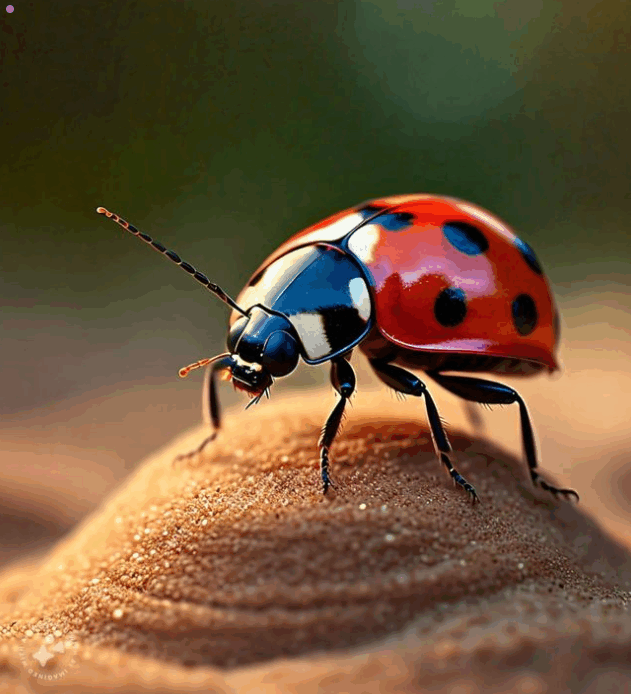Insects are an unavoidable part of life, but when they start invading your home, they quickly go from being a minor nuisance to a major problem. Whether it’s the blood-sucking bed bugs in your mattress, disease-carrying cockroaches in your kitchen, buzzing fruit flies swarming over your fruit bowl, or other persistent pests hiding in corners, insects can cause discomfort, hygiene issues, and even health risks. Fortunately, there are highly effective methods to eliminate these pests quickly and naturally, without relying heavily on toxic chemicals or expensive extermination services. The first and most pressing enemy in the home for many people is the bed bug. These tiny, flat insects hide in mattresses, furniture, and cracks in the walls, feeding on human blood while you sleep.
Signs of bed bug infestation include itchy red bites in a line, rust-colored stains on sheets, and a musty odor near your bed. To get rid of them fast, start by washing all bedding, clothes, and linens in hot water and drying them at high heat. This kills bugs and their eggs. Follow up with vacuuming your mattress, headboard, baseboards, and furniture thoroughly, using a vacuum with a HEPA filter. Steam cleaning is also extremely effective, as high heat kills both adult bed bugs and eggs instantly. For ongoing treatment, use bed bug sprays with natural oils like tea tree, lavender, or clove. These oils not only repel but can kill bugs on contact.
Encasing your mattress and box spring in bed-bug-proof covers is another important step to trap any remaining insects and prevent new infestations. You can also sprinkle food-grade diatomaceous earth in cracks, under the bed, and along floor edges—it’s a natural powder that damages the bug’s exoskeleton and dehydrates them to death. Cockroaches are another formidable pest found in kitchens and bathrooms, especially where moisture and food scraps are present. Roaches spread bacteria and allergens, making their presence a health hazard. If you notice roach droppings, egg cases, or spot them crawling in the dark, immediate action is required. Begin by sealing up all gaps and cracks where they may enter, including around pipes, windows, and baseboards.
Keep kitchen and bathroom areas dry—fix leaks, wipe down wet surfaces, and do not leave dishes or open food out overnight. One of the best DIY solutions for cockroaches is a homemade bait using boric acid mixed with sugar or flour. Roaches eat the mixture, return to their nest, and die—effectively killing off colonies. Additionally, natural repellents like bay leaves or cucumber peels placed in cabinets or under the sink can deter them. You can also use cockroach gel baits and sticky traps for targeted, quick elimination. Fruit flies, although tiny, multiply incredibly fast and are often found hovering around ripened fruit, trash bins, and kitchen drains. Their presence is not just annoying but can also signal poor sanitation.
To get rid of fruit flies instantly, set a trap using a small bowl filled with apple cider vinegar and a drop of dish soap. Cover the bowl with plastic wrap and poke small holes. Flies are attracted by the vinegar, enter through the holes, and get trapped. Also, clean your kitchen thoroughly—empty garbage bins daily, rinse recyclables, and scrub out your sink drains using boiling water, baking soda, and vinegar. Store produce in the fridge, and avoid leaving sugary drinks or fruit juices uncovered. You can also make a natural fruit fly repellent spray by mixing water with lemongrass essential oil and spraying it around common fly areas. Besides these main pests, your home may also be vulnerable to ants, mosquitoes, moths, and other insects.
For ants, mix equal parts of white vinegar and water and spray it along windowsills, doors, and ant trails. Vinegar disrupts their scent paths and drives them away. Cinnamon, coffee grounds, and citrus peels also work well as natural ant deterrents. Mosquitoes breed in stagnant water, so remove standing water from flowerpots, clogged gutters, and birdbaths. Essential oils such as citronella, eucalyptus, and lavender can be mixed with water and used as an indoor mosquito spray. Moths that chew through clothes and pantry goods can be repelled with cedar blocks or lavender sachets in drawers and closets. If you find moth larvae on clothes, place the garments in a sealed plastic bag and freeze them for 48 hours to kill the pests.
While chemical insecticides may work faster in some cases, they often contain harmful ingredients that can affect children, pets, and indoor air quality. That’s why many people today prefer natural, non-toxic methods, especially for kitchens and bedrooms. Using essential oils, diatomaceous earth, steam, and vinegar-based solutions are not only effective but safer for long-term use. However, if your infestation is widespread and persistent, you may need to consult a professional pest control service. Look for companies that offer eco-friendly or heat-based treatments, especially if chemical exposure is a concern. Getting rid of pests is only half the battle—the key to long-term success lies in prevention.
To make your home bug-proof, always keep it clean and dry. Store food in airtight containers, take out the trash daily, and wipe down countertops and floors to remove crumbs. Fix leaky pipes and check for damp areas. Seal cracks, vents, and any gaps that could serve as insect entry points. Consider adding mesh covers to drains or small screens to windows and doors. Routine maintenance and seasonal inspections will go a long way in keeping your living space free of unwanted pests. Insects are relentless, but with a smart combination of natural remedies, consistent cleaning habits, and preventive measures, you can eliminate and keep bugs like bed bugs, cockroaches, fruit flies, and more away from your home for good. Start small—target one area, one pest—and build your defenses from there. Soon enough, your home will be peaceful, pest-free, and healthier for everyone inside.
